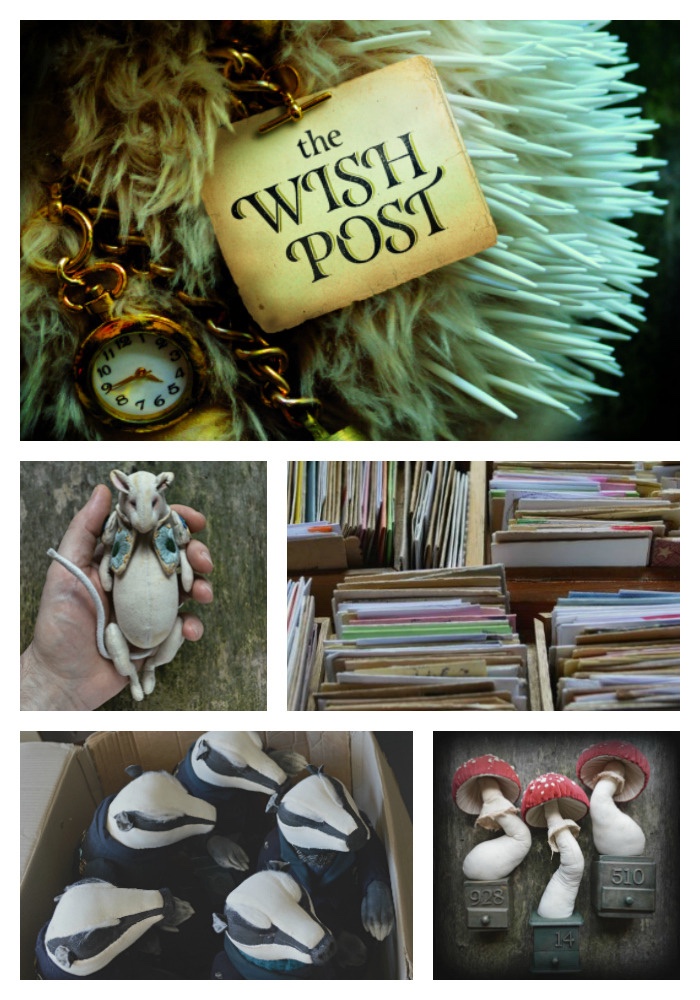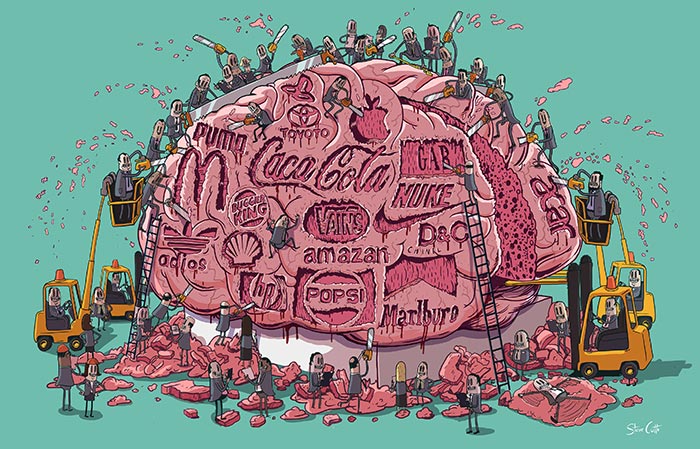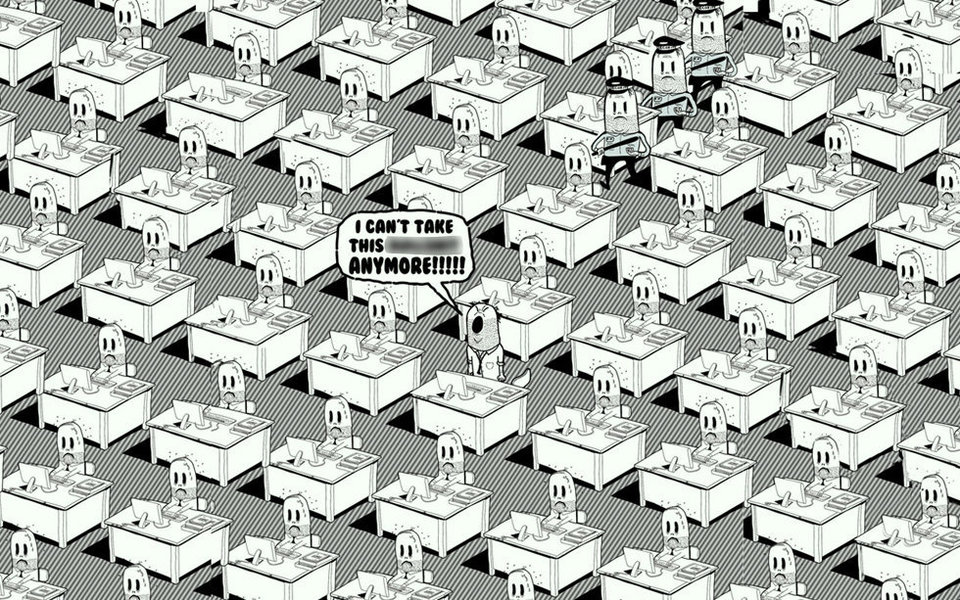I’ve been exploring some of the ways that mood and emotion are expressed by different artists. To depict a ‘state of mind’ is slightly more complicated. It might take some background story or clues for the audience to understand a situation or how it has come about. Or perhaps a particular state of mind involves how an individual has chosen to respond to an emotion or an event; it is not just the emotion but the frame of reference and the individuals view. These more abstract concepts and complicated emotional narratives are much more difficult to communicate. I
I’ve been looking at the work of a few artists who deal with abstract concepts and convey them using different methods. Iranian textile artist Maryam Ashkanian , produced the pieces for ‘sleep series’ by embroidering the shapes and contours of sleeping people onto handmade pillowsThe concept of her work is almost entirely communicated through her choice of materials. The same images drawn on paper would just be the shape of people asleep, but by using fine threads to sew lines and quilt an indent or impression into the pillow, she creates a person who is there but also absent, away in a dream world. There is a vulnerability and fragility to her work ; those loose threads could be pulled and the person undone. The soft, plump pillows embody the comfort that can be found in dreams. In this way, it is the materials and method used to create her work which carries across the layers of conceptual meaning.

Another artist who uses the materials and the creation process to convey depth of meaning is Kumi Yamashita. Yamashita is a Japanese artist, living and working in New York. In SOMEONE ELSE’S MESS (1997) The emotion is immediate from the images of the doleful eyes and the sad faces of children. But it is not until we look closer at the materials and the method that the concept, the cause of the emotion and the situation giving rise to it is revealed. The images are made from military boot prints on bed linen, the boot prints are symbolic of being trampled upon, heavy footed, disregarded in the line of military intervention. The bed linen a reminder of their ordinary, intimate home life that is pervaded by the effects of war,violence and a military presence. The materials are not only symbols; the use of actual boot prints and actual bed linens to create this work brings an authenticity and a confronting, tangible sense of the reality of the experience they describe.

Some of Yamashita’s more recent work uses light and shadow to form images. In an interview for designboom, the artist explained
“For me, shadows came to symbolize another dimension of life, perhaps something even more real than its holder.”
In the piece PATHWAY (2008)then, the silhouette of a man becomes the more powerful image than the aluminium frame. But it is the aluminium’s cutouts which define his contours. He is stepping out of the frame, but without it he wouldn’t exist. It raises questions about the relationship between the solid material and ephemeral shadow. Similarly in the piece BUILDING BLOCKS (2014) the question is raised, which is more important, the building blocks or the woman? The building blocks are solid definite objects and could be rebuilt to form any number of things. However we are drawn to the silhouette of the woman, despite her substance being less ‘real’ than the blocks. This perhaps suggests that material objects are not as important as people, despite the our temporary existences.


Conceptual illustration often uses more figurative or narrative methods to communicate difficult and abstract ideas. In the following images, Karolis Strautniekas creates a recognisable situation through figurative illustration, but also uses stylisation and abstraction to some extent, to simplify the background information and lead us through the narrative of each scene. Once we have an understanding of the situation, we become aware of the crux of the image, an element of disruption, often humour, which causes us to question and engage with the concept.
These pictorial narratives often have a much more immediate impact than a written explanation of the concept, and so are really effective in summarising the idea behind an article or theory and hooking our interest to understand more. I love the idea that in the future, technology will be so advanced that we will be able to live on Mars and have robots collect our dog poo, but that our ambitions will still be limited to being able to avoid simple domestic chores.




The thing that conceptual illustration practice and the contemporary conceptual art installations and sculptures have in common is they require the audience to use it’s visual intelligence and comprehension to piece together an understanding. In this way conceptual artists and illustrators are able to communicate much more complex ideas than can be experienced as a purely emotional or aesthetic response.
sources
Ashkanian, M. (2014). Images from Sleep series. [image] Available at: https://www.thisiscolossal.com/2017/04/sleeping-people-embroidered-onto-handmade-pillows-by-maryam-ashkanian/ [Accessed 10 Dec. 2018].
designboom | architecture & design magazine. (2015). interview with artist kumi yamashita. [online] Available at: https://www.designboom.com/art/kumi-yamashita-interview-03-05-2015/ [Accessed 10 Dec. 2018].
Strautniekas, K. (2014). Europe’s and Austria’s power system. [image] Available at: http://strautniekas.com/#/datum/ [Accessed 11 Dec. 2018].
Strautniekas, K. (2018). Illustrations of the future for Forbes Japan. [image] Available at: http://strautniekas.com/#/forbesjp/ [Accessed 11 Dec. 2018].
Strautniekas, K. (2015). Understanding Our Irrationality. [image] Available at: http://strautniekas.com/#/forbes/ [Accessed 10 Dec. 2018].
Yamashita, K. (2014). BUILDING BLOCKS. [image] Available at: http://kumiyamashita.com/light-shadow/ [Accessed 10 Dec. 2018].
Yamashita, K. (2008). PATHWAY. [image] Available at: http://kumiyamashita.com/light-shadow/ [Accessed 10 Dec. 2018].
Yamashita, K. (1997). SOMEONE ELSE’S MESS. [image] Available at: http://kumiyamashita.com/portraits/ [Accessed 10 Dec. 2018].


 Next I replaced the other half of the mould and used more silicone sealant to join the two half. I used a lollipop stick to spread the sealant evenly across both surfaces so that they would join well and not spill into the cavity. Once this was set, I mixed several colours of resin mix with the hardner according to the instructions. I used a pipette to fill the shape through the wire hole I had made earlier. I tried to fill the whole shape by moving the mould around and allowing gravity some time to settle the resin mix into the corners. When the mould was full I checked for leaks and added more sealant on any weak spots then left to cure, which takes around 24-48 hours.
Next I replaced the other half of the mould and used more silicone sealant to join the two half. I used a lollipop stick to spread the sealant evenly across both surfaces so that they would join well and not spill into the cavity. Once this was set, I mixed several colours of resin mix with the hardner according to the instructions. I used a pipette to fill the shape through the wire hole I had made earlier. I tried to fill the whole shape by moving the mould around and allowing gravity some time to settle the resin mix into the corners. When the mould was full I checked for leaks and added more sealant on any weak spots then left to cure, which takes around 24-48 hours.
 When he was set, I cut him free again from the mould. He looks pretty good- I’m happy that the colours had stayed in separate areas and not smudged together into brown. There were some weak spots on the wings where the resin hadn’t filled completely but I quite liked the texture. The only thing I would change is some of the edges were a little opaque. I think this was from the sealant used to join the two mould halves. So to avoid this, wi should’ve waited longer for the join to set. The only thing left to do was to dim the light and switch on the fairy lights…
When he was set, I cut him free again from the mould. He looks pretty good- I’m happy that the colours had stayed in separate areas and not smudged together into brown. There were some weak spots on the wings where the resin hadn’t filled completely but I quite liked the texture. The only thing I would change is some of the edges were a little opaque. I think this was from the sealant used to join the two mould halves. So to avoid this, wi should’ve waited longer for the join to set. The only thing left to do was to dim the light and switch on the fairy lights…





























